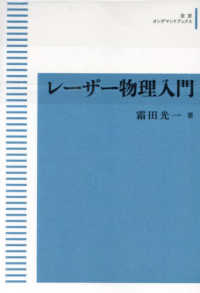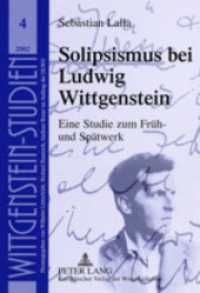- ホーム
- > 洋書
- > 英文書
- > Science / Mathematics
Full Description
Subsequently, increasingly wide ranging, in-depth investigations on the structure and reactivity of lignin exposed the inadequacy of many of the methods currently in use and underscored the ever-continuing need to develop new methods capable of solving the unique analytical problems associated with lignin.








